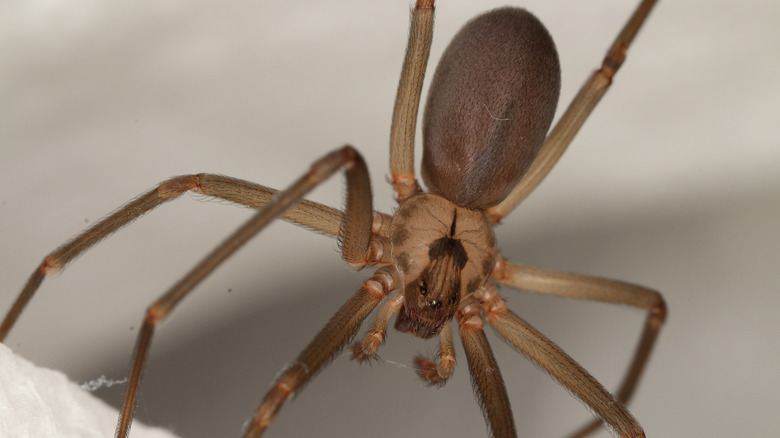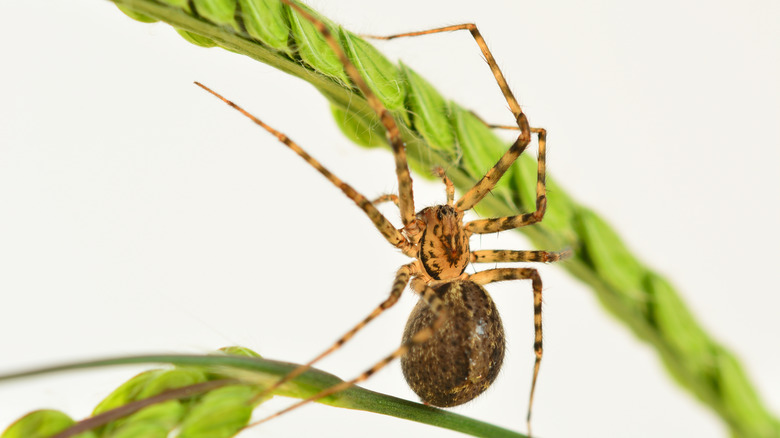Brown Recluse Vs House Spider: How To Know Which Pest Is Invading Your Space
Spiders can invade your home at any time of year, but when fall creeps in, an influx of these eight-legged creatures tends to creep in with it. This is because spiders become more active in autumn as they venture out of hiding to search for mates. If you happen to live within the venomous brown recluse's range, attempting to tell this very real threat apart from its lookalike, the common American house spider, can add more stress to this fall conundrum. Depending on where you live, both may be one of the top 10 types of spiders you commonly see in your home.
Fortunately, all it takes is a closer look to determine which of these brown spiders you're dealing with. From size to eye pattern, these two species are very similar in appearance, but are not quite the same. The most telltale sign of a brown recluse, of course, is the violin-shaped marking on its back. If you live in the southern or midwestern portion of the United States, consider taking a moment to learn the other identifying differences between American house spiders and brown recluse spiders.
Identifying a brown recluse vs. an American house spider
A small violin-shaped marking on a brown spider's back is a surefire sign that you're looking at a brown recluse. A bite from one of these spiders can be very painful and result in an open wound surrounded by dying tissue (necrosis) that can take up to a year (and may require skin grafts) to heal. Unfortunately, since a brown recluse is smaller than a quarter, its telltale symbol isn't always easy to see. Other than the violin-shaped marking, a brown recluse will have no other spots, stripes, or marks. Another telltale sign is the number of eyes. A brown recluse will have only six; an American house spider has eight.
American house spiders (which are actually not exclusive to America) look very similar to the brown recluse at first glance. However, these common spiders can be larger than a brown recluse. They also lack the violin-shaped marking and instead display banding around their legs and may showcase other spotting throughout their bodies. The legs of the female appear yellow with dark bands while the males' legs are a darker shade of orange with the same banding.
A bite from an American house spider is typically similar to a bee sting; you may experience some localized swelling or irritation, but no medical attention is required unless you suspect an allergic reaction. If you frequently spot dangerous brown recluse spiders in your home, it may be wise to employ sticky traps, insecticides, or professional pest removal. On the other hand, you may wish to keep American house spiders around for insect control.

